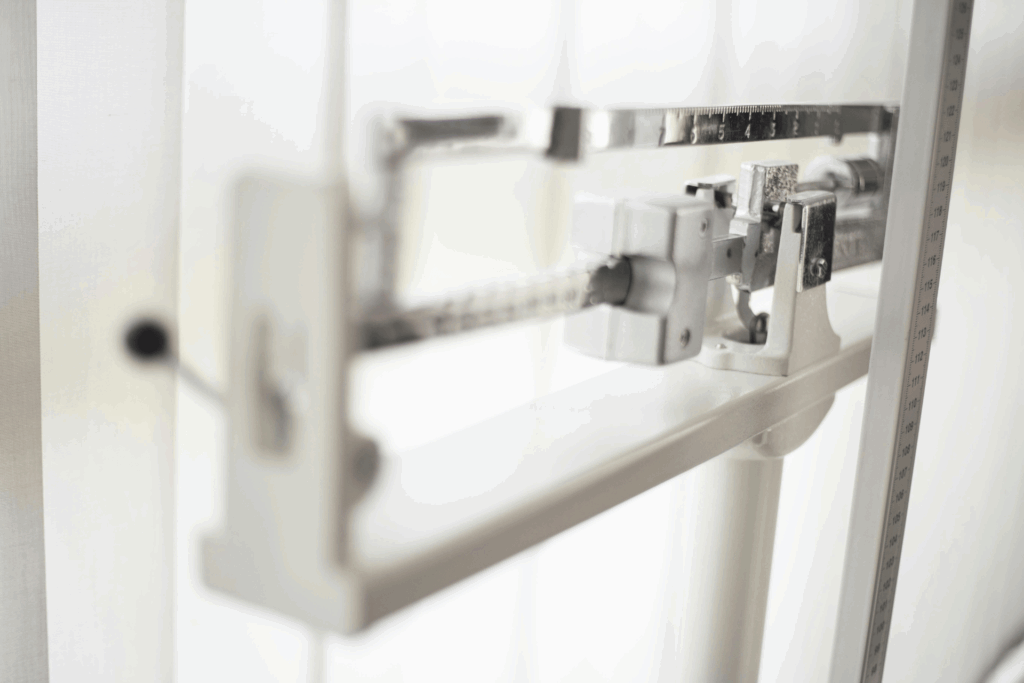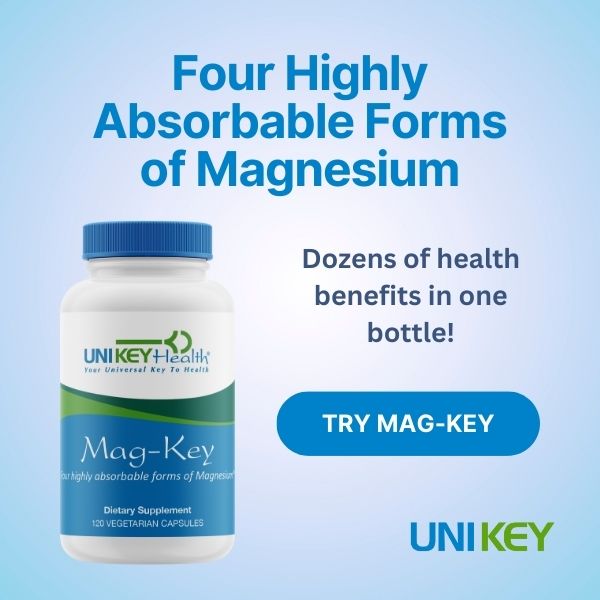Understanding Salt and Sodium
Nearly 20 years ago I wrote a book called “Get the Salt Out: 501 Simple Ways to Cut the Salt Out of Any Diet.”
If I were to rewrite that book today, it would be entitled “Get the Salt In: How the Right Kind of Salt Will Save Your Life.”
Salt is so important that—back in the day—it used to be worth its weight in gold and was used as a form of currency.
The truth is that sodium—found in the form of sodium chloride or salt—plays countless critical roles in the human body that no other macro-mineral can come close to matching!
Without the right kind of salt, our bodies would become like statues. Sodium has a surprisingly pivotal effect on all of our muscles (especially the heart) calming effect on stress, and catalytic role in digestion.
Sodium permeates the fluid between cells (often called the extracellular fluid) while its balancing mineral potassium exists mainly on the inside of the cells or the intracellular fluid.
These minerals need to be in constant dynamic balance so nutrient and waste exchange can take place across cell membranes with sufficient water intake.
At least 1,000 – 2, 000 mg of daily salt is vital for the blood and the lymphatic fluid. But most surprisingly of all is the understanding that sodium (along with zinc and iodine) is necessary for the production of hydrochloric acid—the digestive fluid secreted by the stomach in order to break down protein and keep calcium, magnesium, and iron properly metabolized.
Nearly 70% of Americans over 40 years old are HCL deficient, so a lack of this important mineral may be the key to understanding why so many of us take prescription and over the counter digestive aids.
Along with its sister minerals potassium and magnesium, sodium is required for the proper functioning of our nerves and the contraction of our muscles—including the heart.
Our Paleolithic bodies developed a “taste” for salt to ensure adequate sodium intake. At that time we thrived on minimal amounts of sodium and much more potassium, which we estimate to be a 1:4 ratio in favor of potassium.
On an average day, our hunter-gatherer forefathers consumed about 700 mg of sodium—the equivalent in about a 1/3 of a teaspoon of salt.
Today, however, we are faced with a growing number of environmental, emotional and physiological stresses which actually require more sodium than our Paleolithic ancestors consumed.
Sodium plays a key role in mitigating the stress response and supporting the adrenal glands—which are under constant assault in our 24/7 lifestyles.
Adrenal Cocktail
I recommend this Adrenal “Cocktail” to my over-stressed and over-worked clients—especially midmorning and midafternoon:
- 4 Oz. fresh squeezed orange juice
- 1/4 tsp cream of Tartar (to supply potassium)
- 1/4 tsp of Celtic Sea Salt
The Salt Of Life
Now, there’s salt. And then there’s the right salt.
Unfortunately, most of what is typically consumed in America today is not the right salt. Commercial refined salt is not only stripped of all minerals except sodium and chloride, but it is also heated to such high temperatures that the chemical structure changes.
Additionally, refined salt is chemically cleaned, bleached and treated with anticaking agents, which prevent salt from mixing with water in the salt shaker. Unfortunately, the anticaking agents perform the same function in the human body, so refined salt does not dissolve and combine with the water to assimilate in our bodily fluids. Instead, it build ups in the body and leaves deposits in organs and tissues.
Two of the most common anti-caking agents used in the mass production of salt are sodium-alumino-silicate and alumino-calcium silicate. These are both source of aluminum, which is notoriously drying to the body, interferes with pepsin the in stomach and neutralizes the beneficial effects of magnesium.
So in order to keep our body healthy, we need to ingest the right salt on a daily basis. This means, that we need to consume sodium in its most natural form.
And in nature, the highest amount of sodium is found in sea water along with synergistic and complimentary trace minerals. As an isotonic solution, the highest concentration of the elements in an unrefined sea salt includes magnesium, potassium, chloride, sodium and calcium- similar to the mineral profile of our very own body fluids.
I have used and experimented with many unrefined sea salts, unrefined rock salts and Himalayan pink salts over the years. I am often asked which brand I would recommend, especially since I wrote a book on the topic of salt.
Hands down, my favorite always comes back to Selina Naturally®’s Celtic Sea Salt® which I rely upon daily as my “adrenal tonic” and for cooking! From my experience and research, this salt contains 90 plus minerals with the healthiest mineral balance—especially when it comes to magnesium, the mineral connected to over 350 metabolic processes!!
This natural salt can help to keep our taste buds and blood pressure in tip top shape.
Another way to incorporate this mineral-rich super food is by making Sole (pronounced Solay)—water fully saturated with natural salt.
Here is the Sole recipe that I use:
Ingredients
- About 1 cup Celtic Salt
- Purified water
- 1 Mason jar
Instructions
- Fill the jar about ¼ of the way with Celtic Salt.
- Add filtered water to fill the jar, leaving about an inch at the top.
- Seal the jar with a non-metal lid and let set overnight.
- Use 1 TBSP per day as an instant electrolyte supplement.
Calcium Rich Salt
Best known for keeping our bones and teeth healthy, calcium has other important functions such as regulating heartbeat, nerve transmission (carrying messages from your brain delivering it to other parts of your body), balancing hormones and muscle function. Selina’s Naturally Celtic Sea Salt contains more than seven times the amount of calcium found in ordinary table salt!
Magnesium Rich Salt
One major downfall of ordinary table salt is that it severely lacks magnesium—at only 0.03 percent. Sea salts like Selina’s contains magnesium from anywhere between 0.75 to 1.5 percent! Keep in mind that the fastest way to re-hydrate a dehydrated body is NOT with more water but with more magnesium.
Magnesium is a water hungry molecule. It’s like a magnet that draws water into the cells. This is why if you put a crystal of Celtic Sea Salt on your tongue and drink a glass of water, you immediately feel hydrated!
Aside from keeping the body properly hydrated, magnesium also fights osteoporosis, cardiovascular disease, hypertension, diabetes, migraine, insomnia, depression and skin disorders such as eczema and psoriasis.
Celtic Sea Salt vs. Himalayan Salt: What’s the Difference?
I am often asked about the difference between Himalayan salt and Celtic Sea Salt. The team at Selina’s was kind enough to provide me with some key information in this regard:
Celtic Sea Salt is a brand that consists of a variety of salts from all over the world.
The salts are mindfully chosen, these are some features and benefits required in order to be a part of the Celtic Sea Salt brand:
- Sustainability: The salt must be sustainable.
- Farmer Relationships: There must be good relationships with our salt farmers. Selina personally visits each source to inspect for quality and recommend improvements. If the farmer chooses not to improve the conditions or implement Selina’s plan to insure high quality, the source does not make it into the Celtic Sea Salt family.
- Extensive Testing: Lab analysis is completed for every salt and every salt harvest.
- Alkalinity Standards: Alkalinity must be in the range of 8.6 to 10.23.
- Ideal Sodium Chloride Levels: The Sodium Chloride content must be in the 70 – 80 percentile and no higher than 90%. Some varieties are dried and ground which increases the sodium chloride. As the mineral rich brine is decreased, the sodium chloride is increased.
So what is Himalayan salt exactly?
It is a type of salt imported by several companies selling it under a variety of brands. Unlike an unrefined sea salt with a mineral balance that matches that of our own blood and lymph, Himalayan salt is rock salt or halite from a mine in the Punjab Region of Pakistan. The salt sometimes occurs in a reddish or pink color, with some crystals having an off-white to transparent color.
Celtic Sea Salt® brand is sustainably harvested from pristine coastal regions around the world where the manufacturer has personal relationship with the harvesters. Depending on the harvesting method and location the color ranges from light grey to white.
For comparison, here are the average mineral content and pH of both Himalayan salt and Selina’s Celtic Sea Salt:
Himalayan Salt:
- Sodium – 36%
- Chloride – 60%
- Potassium – 0.3%
- Magnesium – 0.1%
- Calcium – 0.2%
- pH is 6 on average
Celtic Sea Salt®:
- Sodium – 33%
- Chloride – 52.48%
- Potassium – 0.39%
- Magnesium – 0.917%
- Calcium is 0.551%
- pH is 9.4 on average
The Celtic Sea Salt clearly comes out on top regarding mineral percentages and an alkaline pH.
Clearly it’s time that salt makes a comeback in our diets. Understanding the role salt plays in the body and the difference between good and bad sources will help you get the right salt “in” your life once again.










36 Responses
Thank you Ann Louise for this timely info update on the various kinds of salts out there that we need to know about–as well as differentiating the helpful salts from the harmful. Since there seems to be some confusion over the role salt plays in our health, this explanation has been very clear on this issue and most helpful. Thank you!
Hi Ann, I am going to try the salt coctail. I wonder if it will cure me of body jerking. About 5 years ago I went on a 90% vegan diet and I started “jerking”. It goes and comes. Doctors don’t know what it is. Neruologists don’t know. Maybe this potion will help.
Thanks,
Midge
Thanks for the interesting article – yet again.
So if I was to put some Celtic Sea salt (can I use any brand?) into my 1l water bottle how much should I put in and how often??
Thanks in advance.
S
Hi Susie: I would choose the Selina Brand as it appears to undergo the most rigorous testing for contaminants. I would use about 1/4 tsp of it in 1 quart of water twice a day.
Use the SOL recipe above and take 1 TBS per day in your water bottle!
Hi Susie,
Celtic Sea Salt has several varieties. Check out their website. http://www.selinanturally.com
you can also call them and get more information. great folks to talk to and very helpful.
i just put a pinch or 2 of salt in every water i drink, any smoothie, any tea, any latte. i make homemade pop and put in there too…club soda with salt, stevia and lemon or lime or cranberry juice, even grapefruit juice.
I have always used sea salt and enjoyed it even when others would be aghast at me putting generous amounts of salt on my food. Now I know why I felt a pull toward it – our bodies NEED it as opposed to NEEDING a sweetened food.
It’s great to know about this quality salt. I like the fact that it is pH balancing.
Great info! Never heard this about Himalayan Salt and it’s what I have been using, although my doctor says REAL salt has been tested lowest in ARSENIC. What is your opinion on REAL SALT?
Lynn: I like Real Salt but the mineral assay of Celtic Salt from seawater more closely matches the biochemistry of the blood and lympth. My understanding is the Celtic Salt is virtually devoid of heavy metal or chemical contaminants!
My husband has high blood pressure & takes medication for it. How much celtic sea salt should he consume daily? Thank you.
Dear Sue: First of all, do make sure your hubby is taking more potassium and magnesium (at least 800 mg of magnesium throughout the day in the glycinate, taurinate, malate or orotate forms). Perhaps 1/4 tsp of cream of tartar twice per day will help with his potassium levels but this should be confirmed by his practitioner. Once the reserve of these balancing minerals is in place, I would start with 1/8 tsp of the Celtic Salt a couple of times per day. Do check the site for the lowest sodium version in this case!
The thing is to make it more available to everyday shoppers who do their shopping in a supermarket.
Often these gems are talking to the choir
Hi –
Since Celtic salt is not iodized, what do we do about getting iodine? I personally do not eat any seafood. Should I supplement?
Thank you!
Dear Amy: I use a separate iodine supplement from Icelandic Kelp or Iodoral.
I heard that Himalayan “salt” can be manufactured to look like the real thing, and that some Himalayan salts are high in mercury aka cinnabar, which is red. . .any knowledge of this?
I need help, please tell me why I have what feels like an adrenaline rush at 2:30am..my pulse goes to 86-87 and my heart does’t stop pounding..cant sleep the rest of the night..what can I do? feels like anxiety but could it be adrenals..I do have anxiety issues and do not want to resort to Lexapro as recommended by my GYN…
Please ask Ann Louise for a reply..I am so desperate to feel better.
Eileen: Our recommendation is to do an Adrenal Stress Panel which will indicate your cortisol levels at various times of the day (including before bed) so Ann Louise can make informed recommendations based upon your individual biochemical rhythm. You are welcome to call Sierra at 1-800-888-4353 for more info or visit the http://www.unikeyhealth.com site to view the test online.
I get so confused. First I was using Celtic Sea Salt then I read Himalayan was better because with all the contamination in the water especially with Fukashima it’s safer. Plus is it enough to just use the Seal Salt with cooking without just drinking it?
Celtic Sea Salt is third party tested for radioactive elements as well as as a myriad of other components.
Celtic Sea Salt is third party tested for radioactive elements as well as as a myriad of other components.
How does “Redmond Real Salt” compare to the Himalayan salt and to the Celtic Sea Salt? We’ve used it for years, but maybe it’s time for a salt change!
As ALG has mentioned, the Selina Celtic Sea Salt is the only salt with a mineral profile that matches that of blood and lympth. The other salts on the market are certainly more mineral rich than commercial salt, but she feels the Celic Sea Salt is the best of all.
Can you please tell me what impact this has on the Fat Flush Plan protocol? Is it still no for 4 weeks?
Although the original Fat Flush Plan restricted all salt for the initial two introductory phases, ALG now recommends that 1/4 to 1/2 tsp Celtic Sea Salt can be used throughout the day for seasoning and salads – especially for those with dysfunctional adrenals and low blood pressure. All other sources of sodium – with the exception of the Celtic Sea Salt – need to be restricted.
I have looked online to order the Salina Naturally Celtic Sea Salt. There are many kinds. Which is best for normal use: Vital Mineral Blend, or Finely ground Vital Mineral Blend, or Flower of the Ocean?
Hi Diana,
Their Light Grey Celtic is good for your everyday use and cooking. Flower of the ocean is good as a finishing salt (after cooking).
They also have a Makai deep sea salt that is their lowest in sodium and highest in minerals. They all add a nice flavor to any dish.
I’ve heard you on interviews talking about celtic salt gargle in the mornings and also taking celtic salt daily…how much and how often?
thank you!
Cecillia, please refer to the recommendation for Celtic sea salt above. Gargle with the same water as you would drink or twice as strong if you prefer.
Potassium can greatly effect your heart. If you take the adrenal cocktail twice today can it affect your potassium level to the point that it affects your heart. You have to be very careful about the amount of potassium you put into your body because it has such a great effect on the heart.
Patti, it is good to be aware of your potassium intake but unless you have impaired kidney function you would not be at risk to take the adrenal cocktail twice a day. How people use potassium is very individual too as far as their storage or excretion of the mineral based on their metabolism rate.
Hi Ann,
Can you tell me if the Himalayan Salt is legal in the first phase of the Fat Flash Plan?
Hi. Can you please state your opinion on science news that ALL sea salt, including Celtic sea salt contains plastic. Because ALL modern seawater is polluted.
It’s the main reason I’ve settled on unfined “raw” salt such as Redmond RealSalt, because it’s mined from deep in the earth, from ancient salt beds that formed millions upon millions of years ago, before there was such a thing as plastic.
Though I suppose even then, there was pollution in the way of “dinosaur poo” as a family member jokes.
I am just a housewife, trying to get healthy, and in no way connected to any salt company. I just have read a lot and it’s concerning to me that people are still thinking “sea salt” or “Celtic sea salt” is somehow pure, when all of it comes from modern oceans — meaning, horribly polluted.
As far as Himalayan salt, I don’t know, but I have come to distrust any nutrients, food, etc sourced outside United States, Canada, and the U.K.
To the best of my knowledge, there are sixteen salt mines in the U.S. and Canada currently, with Redmond RealSalt being mined in Utah. I’m still trying to find out which specific brands of U.S. and Canadian salt come from which specific locations.
Well, I’m probably obsessing, but salt is such an important component of nutrition that I do feel it’s worth our time to consider such details.
Best of luck to all.
I guess I am confused. Do you use a celtic sea salt or Redmonds